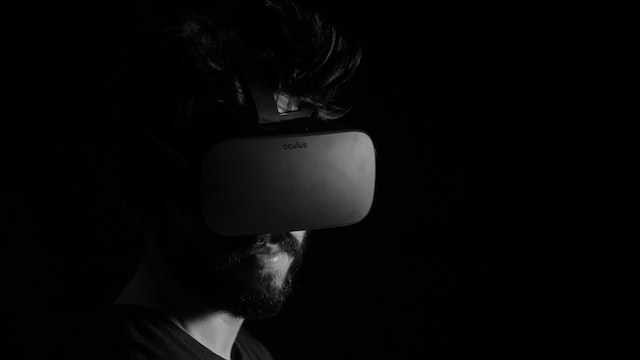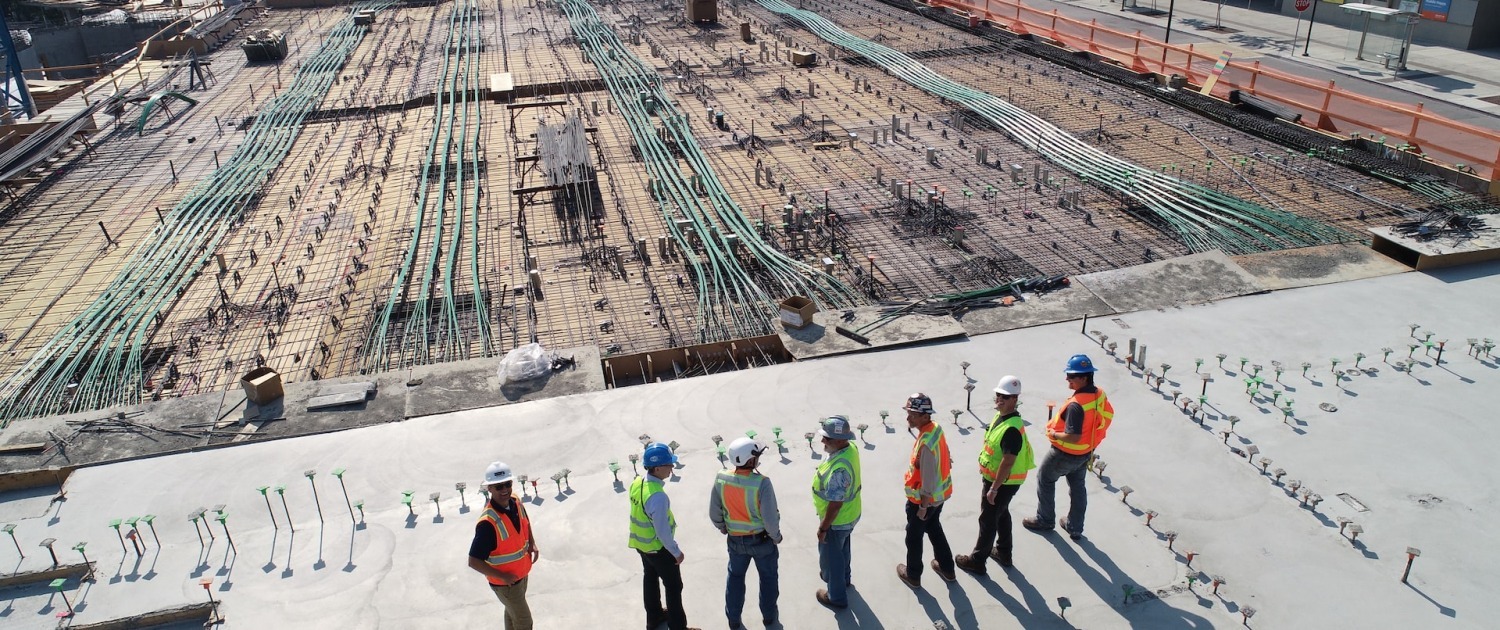Virtual reality has quickly become an invaluable tool for the construction industry in recent years. It enables construction companies to create a virtual environment that can be used for training, designing, and visualizing projects before they begin work on a physical site.
VR also allows for better collaboration between team members, as all stakeholders can access the same virtual space and interact with one another. This eliminates the need for multiple physical meetings, saving time and money. Additionally, it reduces risk by providing a simulated environment in which workers can virtually practice safety procedures without putting themselves or others at risk.
In terms of design, VR opens up significant opportunities to preview plans prior to construction beginning. Companies are able to identify any potential problems before they even set foot onsite, allowing them to make changes before major expenses are incurred. This can save valuable resources and reduce the chance of costly mistakes.
The use of VR in construction is growing rapidly, with more companies investing in the technology to improve the efficiency and safety of their projects. As this trend continues, it’s likely that virtual reality will become a mainstay in the industry for many years to come.
What is Virtual Reality (VR)?
Virtual reality is a computer-generated environment that allows a user to interact with three-dimensional images. It is often used in video games, simulations, and training programs. Virtual reality can create realistic environments that are not possible to experience in the real world.
Virtual reality technology has come a long way since its inception in the early 1950s. Early virtual reality systems used large, expensive computers to generate crude images. Today, virtual reality is created using powerful graphics processors and software that can create realistic environments.
Virtual reality is a simulated experience that can be similar to or completely different from the real world. Applications of virtual reality include entertainment (e.g. video games) and education (e.g. medical or military training). Other distinct types of VR-style technology include augmented reality and mixed reality.
A person using virtual reality equipment is typically able to “look around” the artificial world, move about in it, and interact with virtual features or items. The effect is commonly created by VR headsets consisting of a head-mounted display with one or two small high-resolution OLED or LCD monitors providing separate images for each eye, stereoscopic headphones delivering sound to each ear, and head motion tracking sensors. Some VR systems also include tactile information, generally known as haptic feedback.
Haptic feedback is the sense of touch that can be simulated in virtual reality. This can be used to create the sensation of being able to touch, feel, and manipulate virtual objects. Most VR systems use some form of haptic feedback, which can be as simple as rumble motors in-game controllers or as complex as full-body suits that provide a variety of sensations.
The Benefits of VR in Construction: Improved Collaboration, Reduced Risk, and Design Previews

Virtual Reality (VR) offers many potential benefits for the construction industry. One of the key advantages is improved collaboration between team members, as all stakeholders can access the same virtual space and interact with one another. This eliminates the need for multiple physical meetings, saving time and money.
VR also provides a safer working environment by allowing workers to practice safety protocols in a simulated environment without actually putting themselves at risk. By doing this, they can become familiar with proper procedures before beginning work onsite, which reduces the chance of any accidents occurring.
Lastly, using VR to preview designs prior to construction beginning gives companies an opportunity to identify any problems that may arise before major expenses are incurred and make adjustments accordingly. This can result in significant cost savings and allows for greater flexibility when it comes to making changes.
With its many benefits, it’s no surprise that VR is becoming increasingly popular in the construction industry.
These are just a few of the ways that virtual reality is being used in the construction industry. There are endless possibilities when it comes to leveraging this technology, and as more companies invest in VR, its potential applications will only continue to grow. It’s clear that Virtual Reality is here to stay for the long haul.
Examples of VR In Action: Real-World Applications from Companies Investing in the Technology
Virtual Reality (VR) is being increasingly used in the construction industry for its time and cost saving benefits. Companies such as Autodesk and Microsoft are investing in the technology to create 3D building designs that can be experienced in a virtual environment. This allows for a more comprehensive preview of how the project will look when completed, allowing teams to make any necessary adjustments before construction begins.
Other companies are using VR to simulate hazardous work environments so that workers can practice safety protocols without putting themselves at risk. This has allowed them to reduce instances of onsite accidents while also improving efficiency through better collaboration between team members.
The potential applications for VR in the construction industry are endless, with companies continuing to explore new ways in which they can leverage this technology. It’s clear that Virtual Reality is quickly becoming an integral part of the construction industry, and its uses are only set to increase as more companies invest in the technology.
Overall, Virtual Reality is playing an ever bigger role in the construction industry. Its ability to save time and money while also improving safety makes it a valuable asset for any company looking to remain competitive. With its many benefits, it’s no surprise that VR is here to stay.
How Companies Can Prepare for Adopting Virtual Reality Technology
Companies who are considering adopting Virtual Reality (VR) technology will find there is a lot of preparation that needs to be done before they can take full advantage of the technology. Here are some steps companies can take when preparing for the adoption of VR:
1. Educate yourself and your team: Make sure everyone on your team is familiar with VR and its uses in the construction industry. Spend time researching the latest developments and advancements in VR technology.
2. Prepare your infrastructure: Upgrade or create an IT system that’s ready to handle the demands of a VR setup. Invest in quality hardware and software that’s up-to-date, reliable and able to support a virtual reality experience.
3. Develop an implementation plan: Come up with a detailed plan on how to implement and use the technology. Decide who will be responsible for overseeing the project, as well as how to track its progress and results.
4. Set clear goals: Make sure you have realistic expectations of what VR can accomplish in terms of cost savings, safety improvements or other goals related to your construction projects.
By following these steps, companies can ensure they’re ready for the addition of VR into their workflow. Doing so will help them get the most out of this powerful technology and reap all its benefits in the future.
Conclusion: Why VR Is Here to Stay for the Long Haul
Virtual Reality (VR) has become a key component of the construction industry. Its ability to save time and money while also improving safety makes it an invaluable asset for any company looking to remain competitive.
From improved collaboration between team members, to reduced risk, and design previews, VR offers many potential benefits for the construction industry. Companies such as Autodesk, Microsoft and others are already investing in this technology with great success, and its applications are only continuing to increase.
As more companies invest in VR, its uses will continue to expand and its potential will only grow further. It’s clear that Virtual Reality is here to stay for the long haul. With its many advantages, it’s no surprise that VR is becoming increasingly popular in the construction industry.
The future of construction has arrived and it’s powered by Virtual Reality. Companies that invest in this technology now will have a significant advantage over their competitors when it comes to staying ahead of the curve. It’s clear that Virtual Reality is here to stay and its potential applications are only set to increase further.
As more companies invest in this technology, the construction industry will continue to reap the benefits of VR, making it a valuable asset for any company that wants to remain competitive. It’s clear that Virtual Reality is here to stay for the long haul and its uses are only set to increase further.
Resources for Further Research on Virtual Reality in the Construction Industry
For those interested in learning more about Virtual Reality (VR) and its uses in the construction industry, there are a variety of resources available.
Various industry-specific websites provide up-to-date information on the latest developments in VR technology. Autodesk’s website is an excellent place to start for anyone looking to learn more about how companies are utilizing this technology. Microsoft’s site also offers valuable insights into the potential applications of VR in the construction industry.
In addition, there are numerous books available for those who wish to further their knowledge on the subject. “The Construction Industry and Virtual Reality” by Curtis Satterfield provides an overview of VR technology and its uses within the construction industry. “The Ultimate Guide to Virtual Reality in the Construction Industry” by Michael Miles is another helpful resource that goes into detail on how VR can improve safety, increase efficiency and more.
Finally, for those who want to stay up-to-date on the latest developments in VR technology, several industry publications provide regular updates on the topic. The Constructor Magazine and Construction Technology Magazine are two such publications which cover a range of topics related to construction and its technological advancements.
For those interested in learning more about Virtual Reality and its uses in construction, these resources can provide valuable information as well as insight into the potential applications of this technology.

